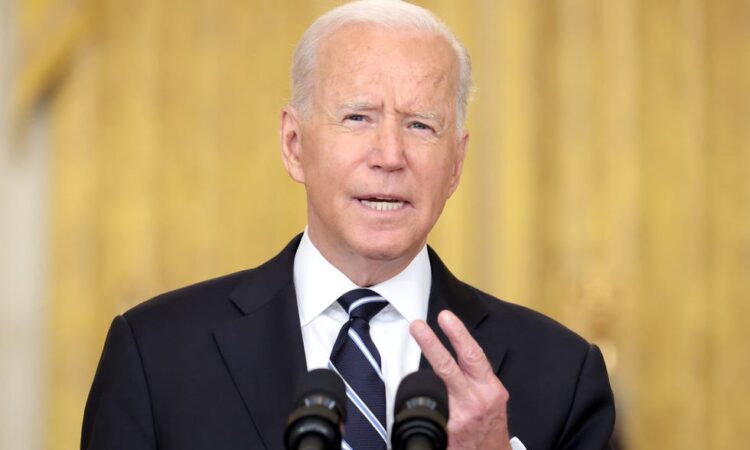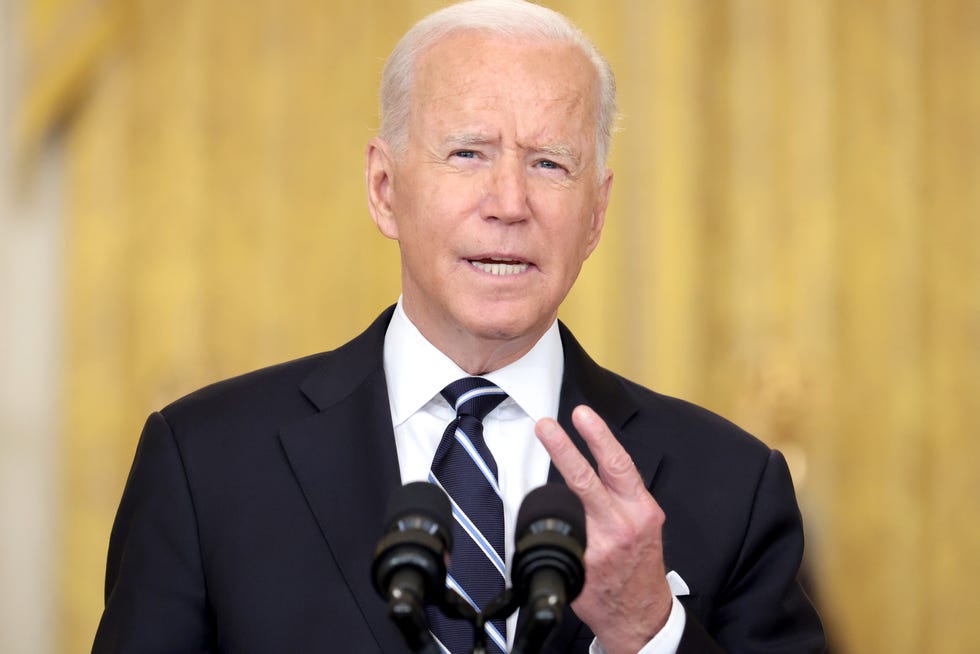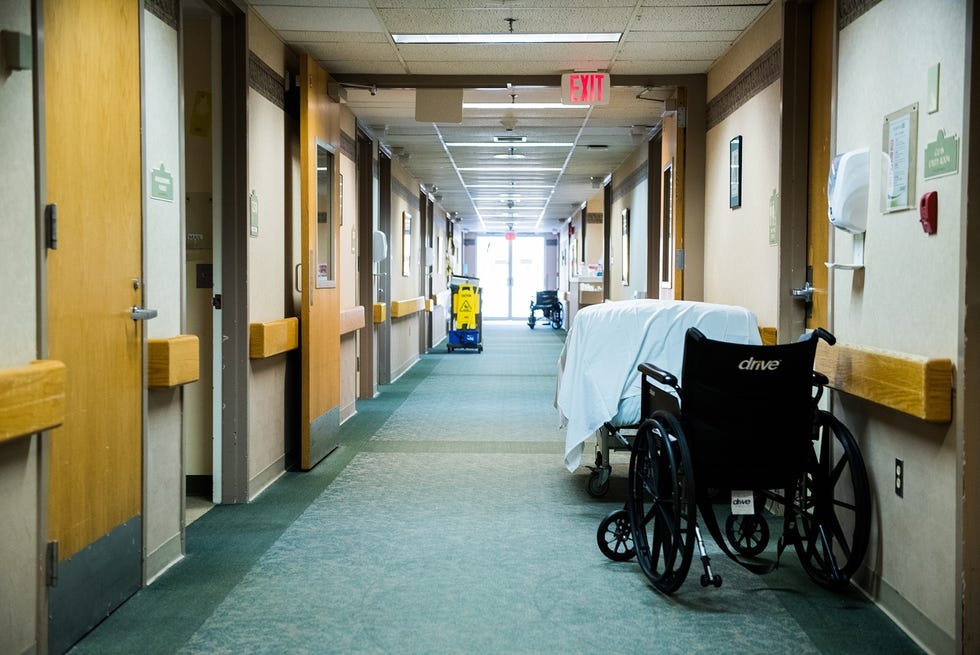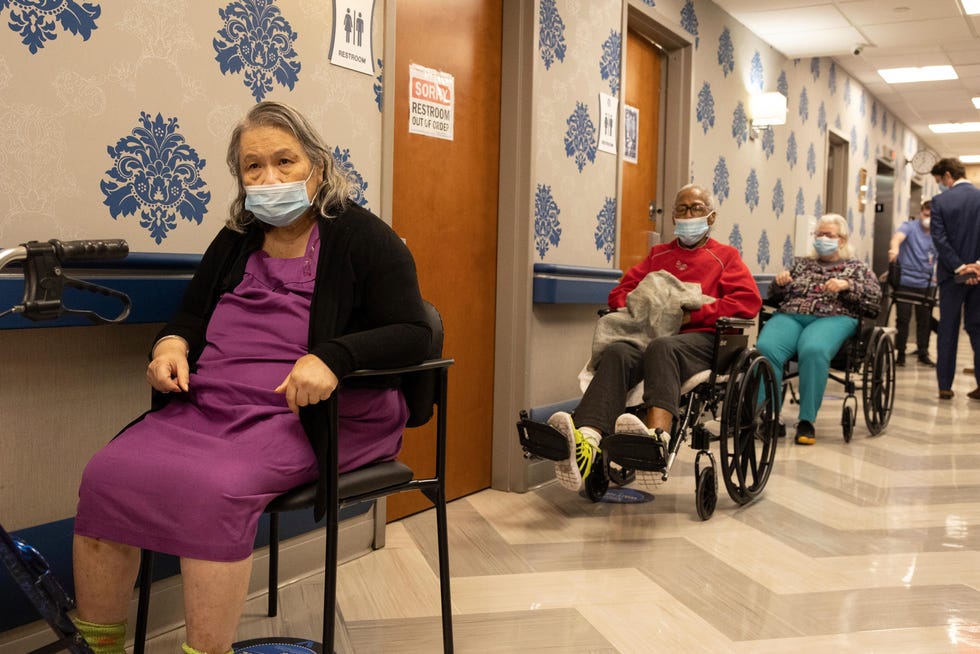
Promises to upgrade nursing home care made a cameo appearance in President Joe Biden’s State of the Union address for the second year running. But a cornerstone of his plan faces strong opposition as updated regulations begin to roll out.
Central to Biden’s plan are more caregivers – nurses as well as the assistants who do the bulk of the day-to-day work with residents.
People who run nursing homes say the president’s proposal to set stringent staffing requirements is impractical, arguing the real problem is that the government doesn’t pay enough to hire the number of care workers recommended under federal guidelines. Some advocates for seniors say many nursing homes have plenty of money – they just need to spend more of it on staffing.
Both have a point.
Fixing senior care will come down to a blend of money and oversight, data and recent analyses suggest. And finding the right mix will require government leaders to better track tax dollars paid to nursing homes. Without understanding the profits and costs driving the decisions made by these businesses and nonprofits, experts say, changes to payment rates and staffing rules are a guessing game.
An academic study expected later this year could provide detailed insight into nursing home budgets. The federally funded effort will be the first time researchers have examined how the unique payment structure of each state’s Medicaid program factors into the facilities’ costs and profits.
Fueled, in part, by the devastating COVID-19 death toll in nursing homes, leaders in some states are not waiting for federal action to ensure public dollars do not pay for poor care.

New York, for instance, set requirements for how Medicaid payments could be spent.
When more than 200 nursing homes sued the state to block the new law, they revealed budget details usually hidden from the public and regulators. One fact stood out: The homes spent most of their government Medicaid funding on expenses other than face-to-face care of residents. In total, the group would have had to return $511 million to the state in 2019 had a key requirement of the new law been in effect: that 70% of Medicaid be spent on direct care.
The United States spends more than $90 billion a year on nursing home stays. That number will only increase as Americans live longer, often with complicated health care needs. How to manage those rising costs has been a sticky debate for federal and state officials, who often are leery of increasing taxes or cutting other programs to fill the looming gap.
Not knowing some of the basics of how nursing homes work, and how much profit they pocket, leaves policy makers at a disadvantage, too. A congressional hearing last fall and a watchdog report from the Government Accountability Office in January highlighted a growing interest among elected leaders to dissect the relationships between numerous business entities that can operate inside a single nursing home. Last week, Xavier Becerra, secretary of the Department of Health and Human Services, announced a new federal rule to collect more detailed information on ownership structures.

The draft rule drew quick criticism from the nursing home industry’s largest trade organization, the American Health Care Association. President Mark Parkinson said it was “a distraction from the real issues” affecting the quality of care in nursing homes, such as Medicaid payments that he said are too low and staffing challenges.
But a group representing nonprofit aging-care providers, LeadingAge, supports Biden’s plan, noting the providers already provide more transparency than for-profit owners through informational forms they must file annually.
“Ownership and financing of nursing homes should be transparent to help ensure that owners or associated businesses do not profit at the cost of quality care,” LeadingAge President Katie Smith Sloan said in a statement.
The two organizations agree on one thing: Any required improvements in staffing or care must come with increased congressional and state funding.
Why does it matter?
At stake are the future health, comfort and dignity of many Americans, in addition to the roughly 1.2 million people who now live in skilled nursing facilities – a number that does not include millions more in independent or assisted living communities.
Most adults will spend at least some time in a nursing home during their lifetime. Some will need skilled nursing and physical therapy to recover after surgery. Others will be years-long residents, either toward the end of their lives or sooner because of disability. Demand already outpaces supply.
Most nursing homes don’t have enough staff to keep their residents safe. A recent USA TODAY investigation found that thousands of nursing homes went an entire day with a registered nurse in the building, yet only a handful were cited for it by inspectors.
Without enough nurses and aides, people go unattended in their own waste, are stranded on the floor after a fall, or lie in bed with painful pressure sores, unmoved for long stretches. That can hasten mental and physical decline and untimely death.
Search the data:Explore COVID outcomes, staffing levels at America’s nursing homes
Are nursing homes paid enough?
Two main sources of funding flow into nursing homes on top of private insurance: Medicaid and Medicare. Some facilities only accept residents who pay entirely out of pocket.
Short-term stays in skilled nursing facilities are covered by Medicare, the federal insurance program for people who are elderly or have a disability. It primarily covers therapy to help people return home after medical events, such as surgeries or a stroke.
A recent federal advisory commission estimated that Medicare accounts for 16% of the money flowing into nursing homes even though it pays for 10% of stays.
USA TODAY found that the number of caregivers a nursing home can afford under Medicare’s reimbursement formula is almost always less than minimum staffing levels recommended by a 2001 federal study. That’s because the algorithm is based on an old snapshot of the industry’s staff numbers, not what is now known about what’s needed.
At the same time, the typical nursing home is profitable.
The Medicare Payment Advisory Commission, a nonpartisan government group that advises Congress, said profit margins for Medicare residents in nursing homes average more than 17%. Some operators report even higher profits. With economic headwinds, including inflation and low unemployment, driving up wages and supply costs, the commission projected profit margins would fall to 10% this year.
A portion of these profits could be spent on hiring more nurses and aides. But it’s unclear how much closer that would bring the industry to federal staffing benchmarks.
As it stands, researchers say some nursing homes may use profits from Medicare patients to balance out losses or smaller profit margins elsewhere in the operation – such as residents covered by Medicaid.
What’s the deal with How does Medicaid factor in?
Many elderly Americans from middle-class backgrounds end up having their aging care covered by Medicaid after they use up their savings. The government insurance program for low-income people is paid for by a mix of federal and state tax dollars.
In all, Medicaid funds about two-thirds of nursing home stays, including for many who enter the facility under Medicare coverage but stay longer than three months.
Industry officials have long asserted that Medicaid rates do not cover the full cost of caring for those residents. However, reviews of individual facilities with large Medicaid populations have sometimes concluded they are, in fact, profitable.
Sorting that out is difficult without access to detailed financial information about nursing home operators and their web of sister companies.

Each state also designs its own coverage and rates, leading to wide differences. A second federal commission advising Congress on Medicaid policy reported recently that on average those programs pay 86% of the actual cost of caring for nursing home residents, although 1 in 7 homes receive as little as 70%.
The commission’s analysis included only baseline Medicaid payment rates, not additional money some states pay facilities for meeting quality standards or serving particular types of residents, such as veterans. The study’s authors said those bonuses complicate the picture so much that they couldn’t say for certain which nursing homes have costs covered and which don’t.
If base payments from low-paying Medicaid and high-paying Medicare are both considered, the commission found, the average nursing home’s overall profit margin drops to 3.4%.
A more complete picture that could guide policy decisions may finally come this year. Under a federal grant, researchers from the University of Massachusetts, Boston and Miami University of Ohio are compiling detailed Medicaid payment data from every state and comparing it with expenditures nursing homes report to federal regulators.
“For the first time, we will have a baseline,” said Marc Cohen, one of the study’s authors and the co-director of an aging studies center at UMass Boston. “Then we can mark progress over time.”
Should federal leaders increase funding?
Because Medicaid is the primary payer for nursing home care, David Grabowski, a Harvard University researcher and member of the congressional Medicare payment commission, said fixing Medicaid funding will be crucial to improving quality of care.
He said the existing higher payment rates for Medicare entice nursing homes to prioritize serving people who need short-term stays. Facilities that focus on Medicaid residents can find themselves reducing quality to balance their budgets or guarantee profits.
“This way of paying and supporting nursing home care in this country is completely broken,” he said at a commission meeting last month. “From an industry perspective, this is a flawed model: overpaying with one public payer and underpaying with the other and hoping for the best.”
LeadingAge, an industry association representing non-profit aging services, suggested in a letter to members of Congress that federal leaders could guarantee a basic level of care nationwide by requiring state Medicaid programs to cover at least 95% of the cost of care, up from the average of 86%. The larger trade group, the American Health Care Association, also supports the “reasonable cost” proposal.
Cohen, the researcher at the University of Massachusetts, Boston, said the quickest way federal officials could close the cost-of-care gap in Medicaid is to increase the share of funding that comes from the federal government, which would incentivize states to invest more, too. On average, Cohen said, the current state-federal split is 50-50.
Do nursing homes profit from short staffing?
Wages account for about two-thirds of the cost of running a nursing home. A nonprofit home or chain with a tight budget, or a private company looking to maximize profits for shareholders, may see that line item as a target for cuts.
One federal rule requires a registered nurse in the building at least eight hours a day. Another requires facilities to have enough nurses and aides to provide appropriate care based on resident needs, but it lets each facility define “sufficient” for itself. USA TODAY’s investigation found that both rules were rarely enforced at homes where payroll records show staffing fell short.
Dying for Care:Read USA TODAY’s full investigation

Academic studies have found that for-profit facilities, particularly those owned by private equity firms, have hired fewer registered nurses while bringing in more licensed practical nurses. The math behind that is simple: Nursing homes pay practical nurses an average of $24 an hour compared with $35 for registered nurses, according to federal wage statistics.
Federal law requires at least one of either kind of nurse in the building at all times, so filling most of those hours with the cheaper option can save big money. The cost savings of reduced registered nurse hours, however, has a human price.
Registered nurses receive more extensive training than licensed practical nurses. They are the only providers certified to develop care plans, determine if there’s been a change in condition and to complete an assessment after an incident, such as a fall. They receive additional training on infection control and wound care.
Some licensed practical nurses interviewed by USA TODAY said that when there are not enough registered nurses working, these duties fall to them. And because they care about residents, they do work their license doesn’t allow and for which they’ve received no formal training.
Another way to make money: Pay yourself and keep ownership vague
A variety of businesses tend to operate inside a nursing home. The operating company that writes the check for nurses might appear to be losing money in annual reports to federal officials. But the company might also be paying a profitable sister business for services like laundry or pharmacy.
A parent company might even own the land and the building as separate subsidiaries. The nursing home then can operate at a loss while paying rent to the real estate fund, which is profitable.
Since 2009, the federal government has had authority under the Affordable Care Act to require that nursing home companies provide detailed disclosures of who owns them. Yet the primary regulator for nursing homes, the Centers for Medicaid and Medicare Services, proposed doing so just this month. Existing ownership records are incomplete.
The ability to collect ownership details is being tested in Illinois, which is set to gather the information for the first time this year.
Illinois nursing homes have the nation’s lowest nurse staffing levels, based on USA TODAY’s analysis of timecard data. It’s a distinction state leaders want to reverse through financial incentives tied to accountability measures.
With more information on the ownership structure of nursing home companies, state officials hope to learn how best to hold operators accountable for the new staffing standards and bonus payments.
Potential reform: Tie money to hiring more staff
For years, states have experimented with a variety of Medicaid bonus payments – called “supplemental rates” – to encourage nursing homes to meet quality standards or serve certain kinds of residents, such as veterans.
Now, some states are zeroing in on staffing and profitability within their Medicaid programs as one potential reform.
Illinois changed its Medicaid payments to focus on both nursing care and wages for nursing aides. Payments go up as staffing approaches the desired levels.
Those payments, started last summer, could account for as much as 10% of nursing home funding, among the highest performance supplements in the country, according to officials from the state’s Department of Healthcare and Family Services.
A previous rate increase approved by the Illinois legislature had no effect on staffing levels after two years, said department Director Theresa Eagleson. And an internal review of payments found that facilities with the most Medicaid-paying residents actually had some of the largest profit margins.
“We had a lot of facilities in Illinois making a lot of money by doing the wrong things,” like cutting staffing levels, Eagleson said. “That’s why we started this campaign.”
Potential reform: Limit profits
New York has taken a more direct approach to making sure nursing homes spend public dollars on care and caregivers.
A recent state law will require nursing homes to spend 70% of their revenue on direct care, including 40% on staff who work face-to-face with residents. Those changes were coupled with increases to minimum staffing requirements. Both will take effect once the state writes policies to guide the laws.
New York’s reforms call for capping profits at 5%. Any excess would go into a state fund to pay bonuses to nursing homes with the best quality of care records. That component of the law is in limbo because about half the state’s nursing homes and three trade associations sued to block it.
The December 2021 complaint challenging the law calls the profit cap “an unconstitutional taking of Plaintiffs’ private property for a public purpose.” It says a state cannot direct how federal Medicare funds are spent, and alleges that the “arbitrary” spending requirements for direct care and staffing are not linked clearly enough to quality of care.
Filings in the case also provide a detailed glimpse of normally hidden operator budgets.
The nursing home operators said that if the profit cap and direct care spending requirements had been in place in 2019, they would have had to return $824 million to the state. That money includes $511 million the homes spent on expenses other than direct care or face-to-face resident services, plus $313 million in profits above the new 5% limit.
Jayme Fraser is a data reporter on the USA TODAY investigations team. Contact Jayme at [email protected], @jaymekfraser on Twitter and Facebook, or on Signal and WhatsApp at (541) 362-1393.






